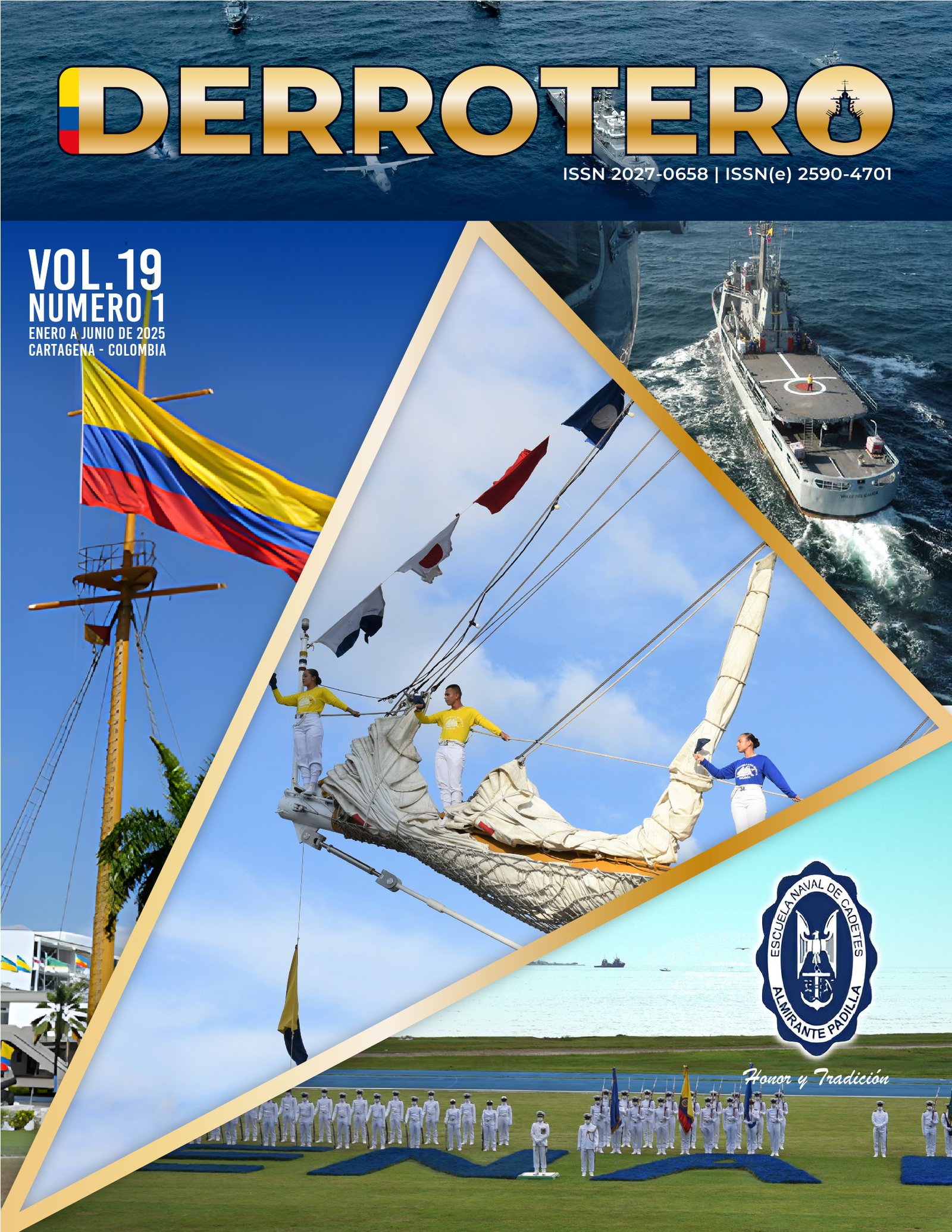Análisis Estructural de la Cubierta de una Barcaza de Carga sobre Cubierta, mediante el Método de Elementos Finitos para Predecir los efectos de la Corrosión y la Fatiga en el Esfuerzo de Colapso
DOI:
https://doi.org/10.70554/Derrotero2025.v19n01.05Keywords:
Structural collapse, Corrosion, Fatigue, Finite elements, River bargesAbstract
This paper analyzes the risk of collapse in the hull structures of barges in commercial river navigation, specifically due to the effects of corrosion and fatigue. Although there are few documented cases in Colombia, significant incidents have been reported internationally, such as those in Paraguay and Serbia, where the hull structures of barges collapsed due to these factors.
The study focuses on the application of finite element analysis (FEA) to model the structure of a barge operating on the Meta River in Colombia. Three specific objectives were established: to create a mathematical model of the barge’s hull considering the nonlinear behavior of the material, to simulate the impact of fatigue and corrosion on the collapse efforts of the structure.
To achieve this, SHELL181 and BEAM188 elements were used in the ANSYS software, allowing for detailed simulation of the structural behavior under extreme conditions. Corrosion reduces the thickness of the structural sections, which decreases their strength and accelerates plastic collapse under loads. The results showed that fatigue, combined with corrosion, significantly reduces the barge’s service life, increasing the risk of structural failure.
The analysis revealed that the reduction in thickness due to corrosion leads to increases in equivalent stresses, compromising the integrity of the structure and leading to plastic collapse when stresses reach critical levels. This study highlights the importance of considering both corrosion and fatigue in the design and maintenance of river barges to avoid catastrophic failures.
References
Ayyub, B. M., Stambaugh, K. A., McAllister, T. A., de Souza, G. F., & Webb, D. (2012). Structural life expectancy of marine vessel: Ultimate strength, corrosion, fatigue, fracture, and systems. Journal of Marine Science and Technology, 17(2), 162-175.
Bureau Veritas. (2013). Directrices para la protección contra la corrosión aplicables a los buques de navegación en aguas interiores. Bureau Veritas.
Cadavid, Camilo & Patiño, Iván & Lemmel, Karen. (2018). Análisis por elementos finitos del desempeño estructural de jaula de seguridad para vehículo Renault Logan bajo normatividad FIA. Revista CINTEX. 23. 35-53. 10.33131/24222208.312. Disponible en: https://www.researchgate.net/profile/Ivan-Patino-2/publication/336979281/figure/fig2/AS:11431281190868921@1695523946458/Figura-9-Detalle-de-la-malla-de-las-cartelas.jpg
Cameron, R. D., Nadeau, D., & Losciuto, E. (1997). Ultimate strength analysis of inland tank barges. Journal of Ship Research, 41(3), 135-146.
Garbatov, Y., & Guedes Soares, C. (2005). Evaluación de la confiabilidad por fatiga de uniones soldadas de ferrys muy rápidos, teniendo en cuenta la carga de vehículos. Journal of Marine Structures, 18(1), 1-23.
Meinken, S., & Schluter, B. (2001). Collapse behaviour of a push-barge. Proceedings of the 2nd International Conference on Marine Structure, 1, 210-220.
Popov, E.P. (2000) Mecánica de Sólidos. 2da. Edicion. Pearson Education.
Royani, A., Prifiharni, S., Priyotomo, G., Triwardono, J., & Sundjono. (2019). Corrosion rate and life expectancy of carbon steel in freshwater. Corrosion Science, 148, 16-25.
Salazar, L., Hernández, J., Rosas Huerta, R., Iturbe, A., & Herrera, A. (2021). Structural analysis of a barge midship section considering the still water and wave load effects. Marine Structures, 45, 231-243.
Downloads
Published
How to Cite
Issue
Section
License
Copyright (c) 2025 Alfonso E. Arrieta Z.

This work is licensed under a Creative Commons Attribution-NonCommercial 4.0 International License.
The authors retain copyright and grant the journal the right to publish the work under a Creative Commons Attribution License, which allows third parties to use the published content as long as they credit the author(s) and the publication in DERROTERO.
This work is licensed under a Creative Commons Attribution-NonCommercial-ShareAlike 4.0 International License.










